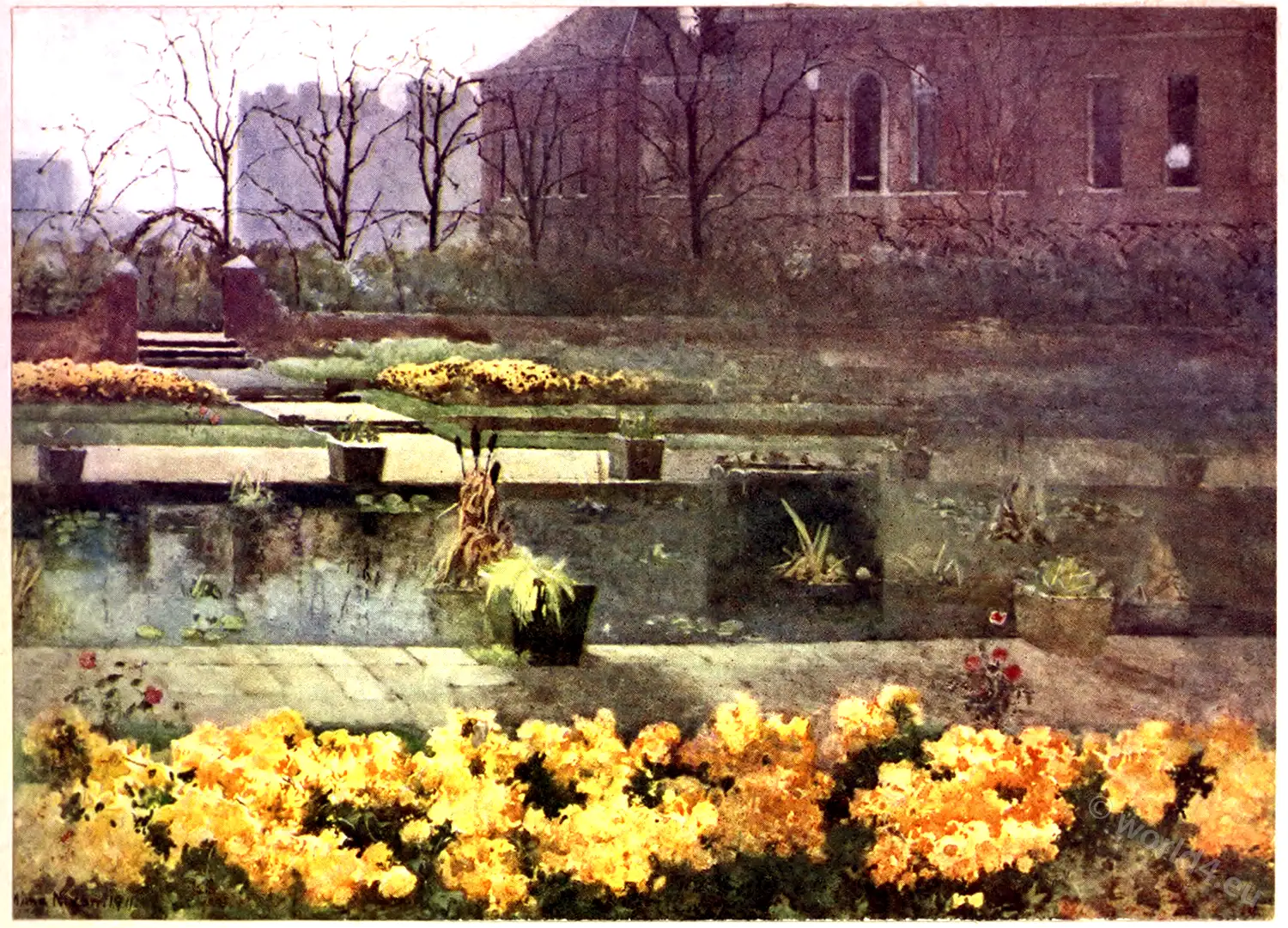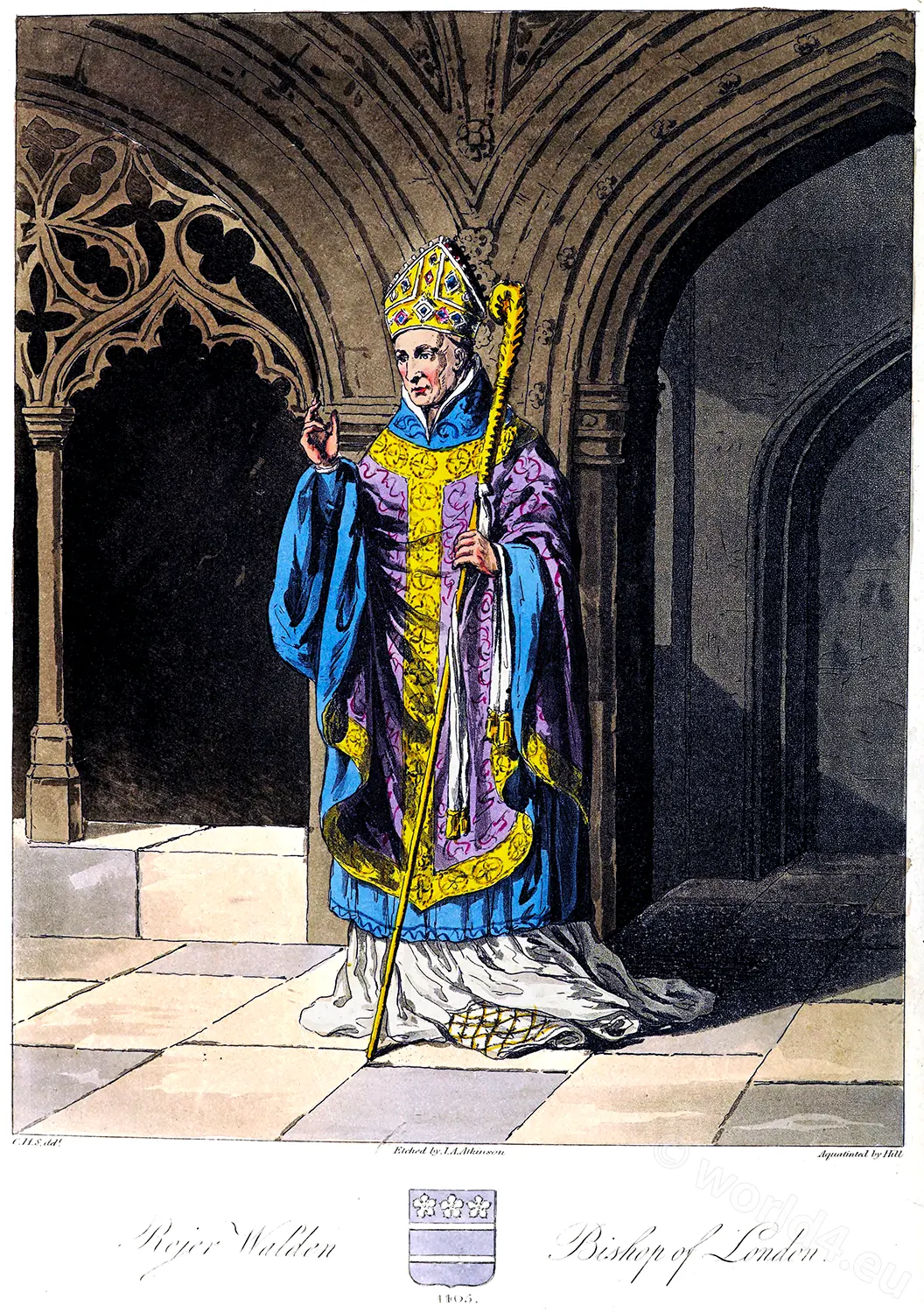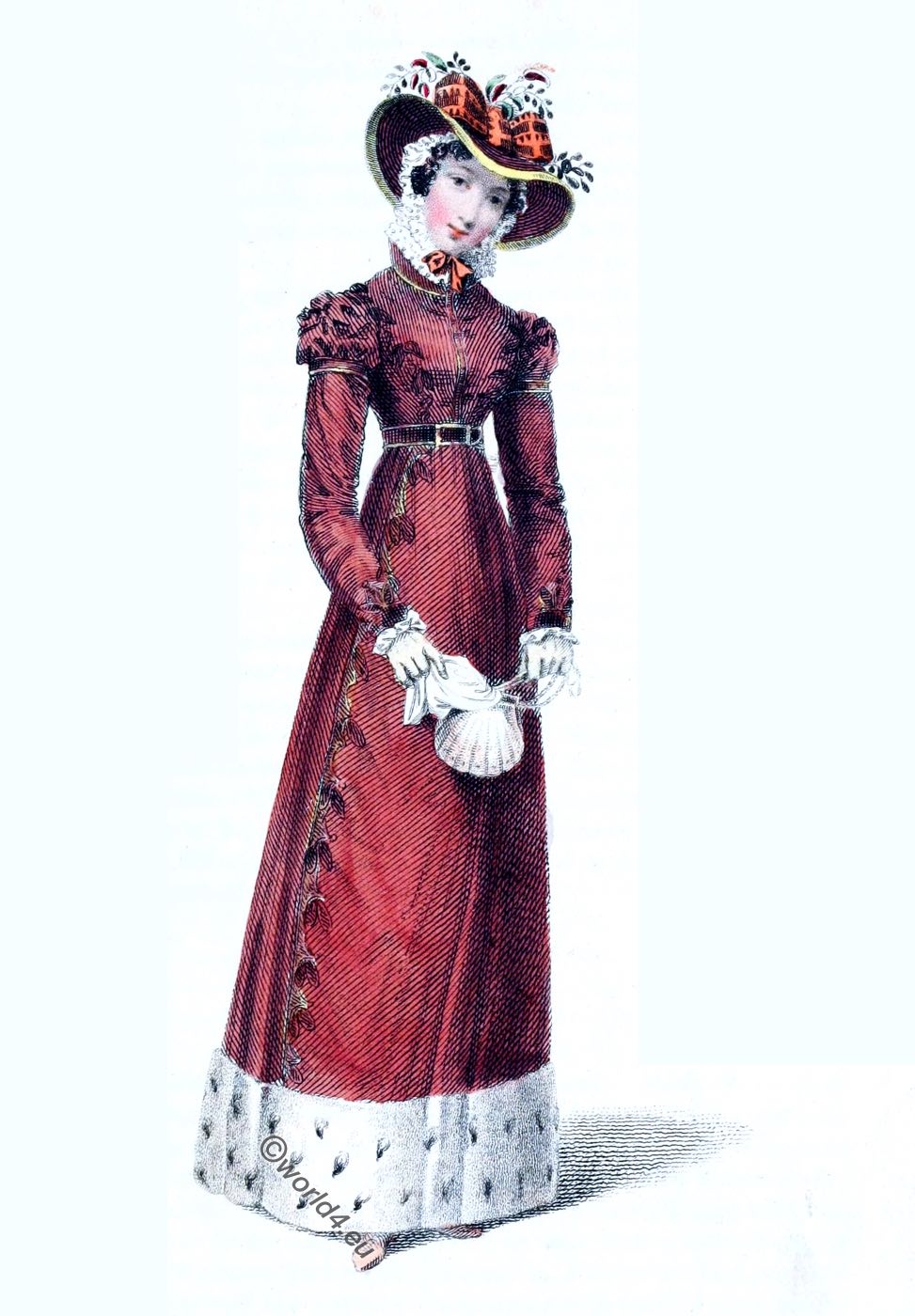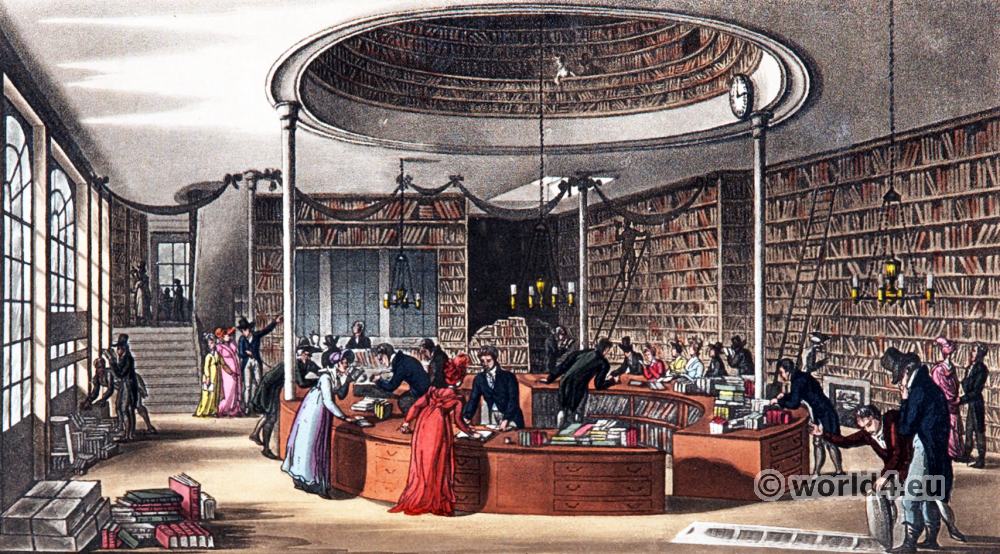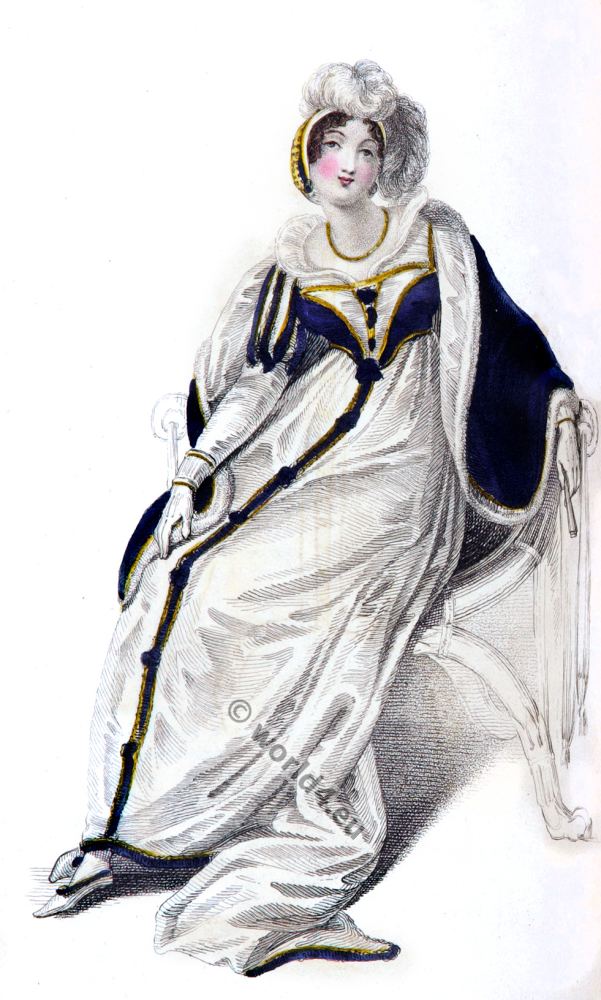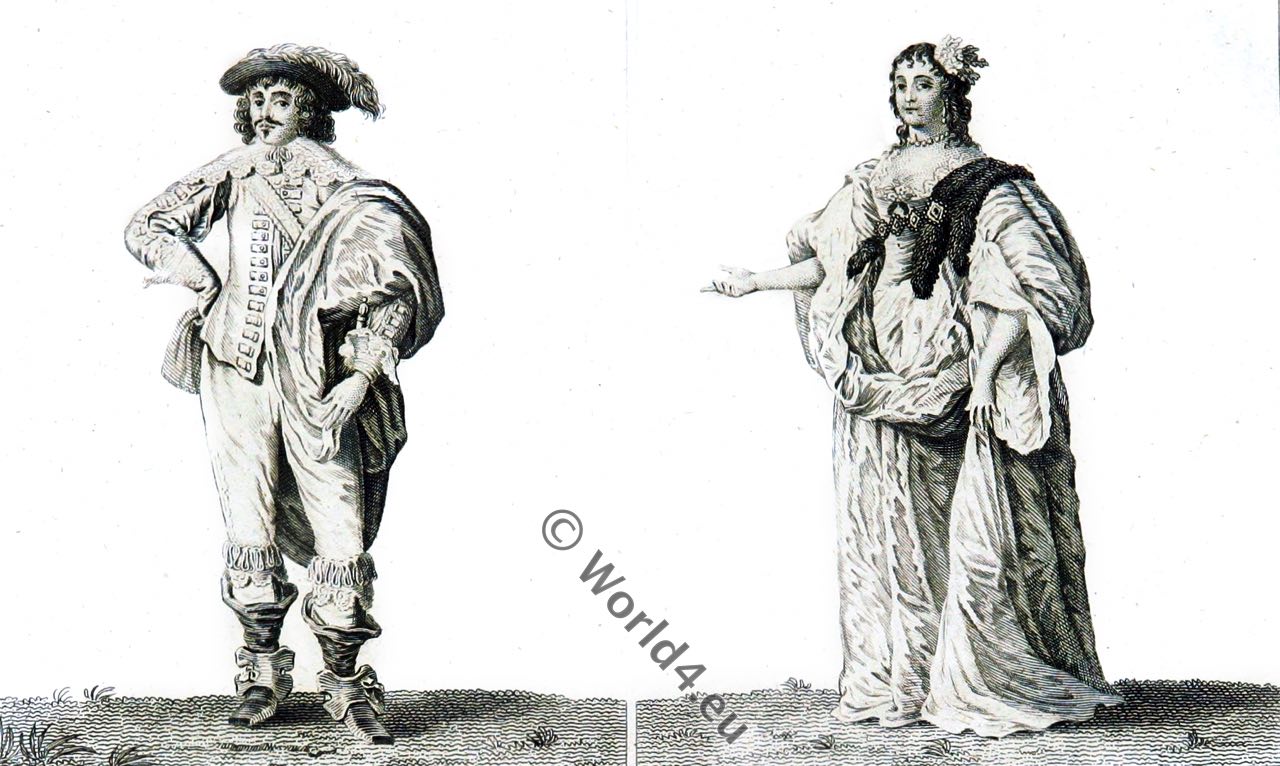ENGLAND. Kensington Palace, London.
KENSINGTON GARDENS, adjoining Hyde Park, at one time to belonged Sir Heneage Finch, created Earl of Nottingham in 1681. We read that in March 1662 a grant was made to Finch “of that ditch or fence which divides Hyde Park from his own lands with the trees, etc., thereto belonging, 10 feet by 100 roods, from the southern highway leading to Kensington, to the northern highway leading to Acton, with the disparking the same” (only twenty-six acres then surrounded the house and park).
In 1691 William III purchased Nottingham House, as it was then called, from Daniel, second Earl of Nottingham, a considerable part of Whitehall having just been destroyed by fire. He rebuilt it almost entirely from designs by Sir Christopher Wren, Surveyor-General, and Nicholas Hawksmoor, Clerk of the Works. Kent designed the east front, cupola room, and grand staircase, painting the walls and ceilings. The gardens were laid out by King William, the yews and holly hedges being cut to resemble lines, angles, bastions, scarps, and counterscarps of regular fortifications; the result was known as the ” of Siege in Troy.” Gibson, describes the gardens thus:
“Kensington Gardens are not great, nor abounding in fine plants. The orange, lemon, myrtles, and what other trees they had there in summer were all removed to Mr. London’s and Mr. Wise’s greenhouse at Brompton Park, a little mile from them. But the walks and grass laid out are very fine, and they were digging up a flat of four or five acres to enlarge the garden.”
Queen Anne and Prince George of Denmark were as much attached to the palace and gardens as William and Mary had been; the place was, in fact, settled on Prince George, but he died six years before his wife. Anne added to then gardens, planting nearly thirty acres more to the north, separated from the rest by a large greenhouse.
The Temple, or Banqueting House, was built by order of the Queen from designs by Sir Christopher Wren. Queen Caroline, wife of George II, bequeathed the gardens to us in their three hundred acres of ground, and forming the Round Pond and the beautiful vistas of trees that radiate from it. Each had a distinct name, such as Old Pond Walk, Bayswater Walk. The groves were filled with squirrels and a large number of tortoises, presented to the queen by the Doge of Genoa.
Bridgman was the gardener who planned the alterations and invented the sunken fosse dividing the park from the gardens. This was a popular novelty, and from it we may trace the origin of present form, adding the word, “Ha-ha” the! surprised exclamation of the pedestrian, meeting an unexpected obstacle to his walk. This fosse was partly filled up in 1868.
The gardens were opened to the public on Saturdays, when the Court went to Richmond, but the company were expected to appear in full dress. On Sundays the Queen held a Court after morning service, an elegant rendezvous taking place on the green in front of the palace. On the death of George II the Court ceased to reside here, and the gardens were thrown open freely.
Sheridan says of the “We all herd says gardens, in one walk, and that nearest the Park:
“There with ease we may see as we pass by the
wicket
The chimneys of Knightsbridge and footmen at
cricket.
I must though in justice; declare that the grass
Which, worn by our feet, is diminished apace,
In a little time more will be brown and as flat
As the sand at Vauxhall or as Ranelagh mat.
Improving thus fast, perhaps by degrees,
We may see rolls and butter spread under the
trees,
With a small pretty band in each seat of the
walk
To play little tunes, or enliven our talk.”
A few deer were still to be seen here some time after the beginning of the nineteenth century, and foxes were hunted here at the end of the
eighteenth century. (Minute Board of Green Cloth 1798, pension to Sarah Gray, husband accidentally killed by keepers while hunting foxes.)
Queen Victoria was born at Kensington Palace in 1819; Lord Eldon’s official duties as, Lord Chancellor obliged him to be in attendance. When he returned home, greatly moved, he took down Shakespeare, reciting from Henry VIII:
“This royal infant heaven still moves about
her!
Though in her cradle yet now promised
Upon this land a thousand thousand blessings,
Which time shall bring to ripeness; she shall be,
But few now living can behold that goodness
A pattern to allprices living with her,
And all that shall succeed.”
The Princess was privately christened here on June 24, 1819, and was still living in the palace with her mother, the Duchess of Kent, when at the death of her uncle, William IV, the throne devolved upon her, and here she held, in 1836, her first Council.
The late Duke of Sussex occupied apartments in the palace, where as President of the Royal Society he gave receptions to men of science and scholars. Here he collected his magnificent library, specially rich in Bibles.
Queen Alexandra’s cousin and friend from babyhood, the Duchess of Teck, whose father, the Duke of Cambridge, was George Ill’s favourite son, lived in apartments in the palace where our present queen, Princess May of Teck, was born on May 27, 1867, the baptism taking place on the following 27th of July. Thus the young princess spent part of her happy childhood in the palace whose gardens are the playground of London’s children.
Source: Royal Palaces & Gardens by Mima-Nixon. A. & C. Black LTD. London, 1916.
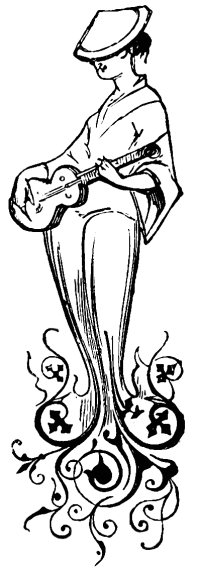
Discover more from World4 Costume Culture History
Subscribe to get the latest posts sent to your email.

